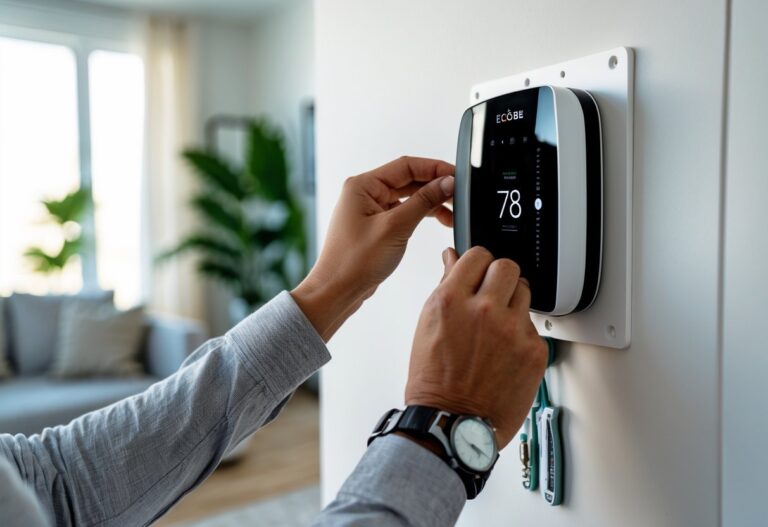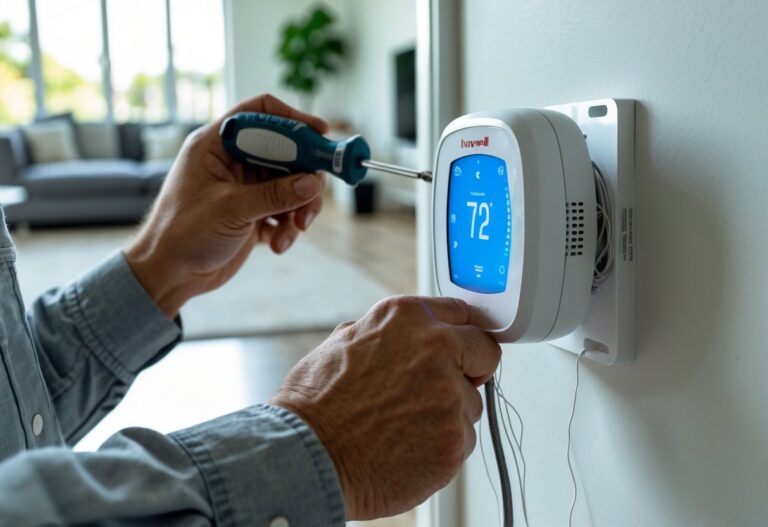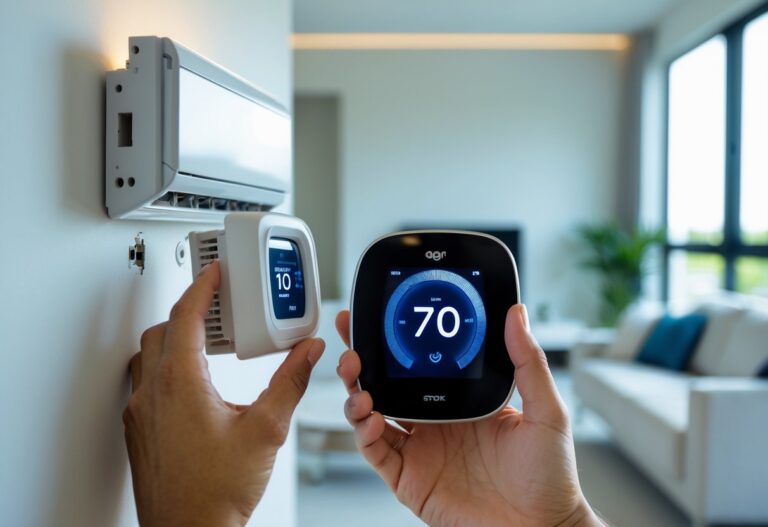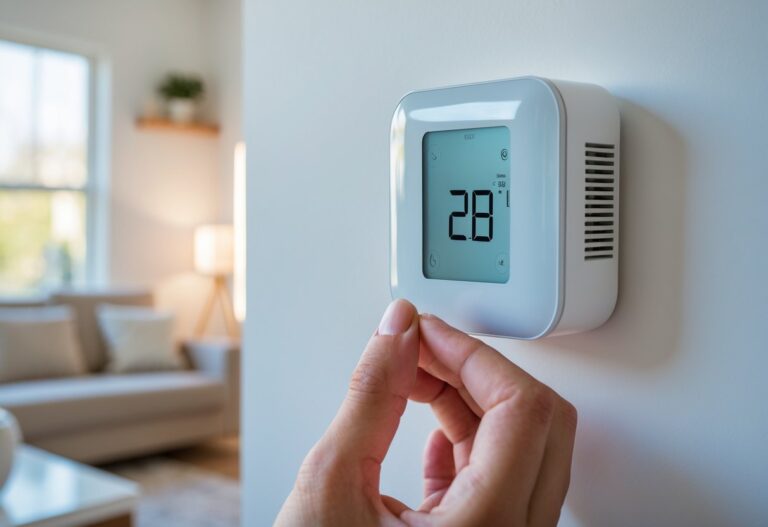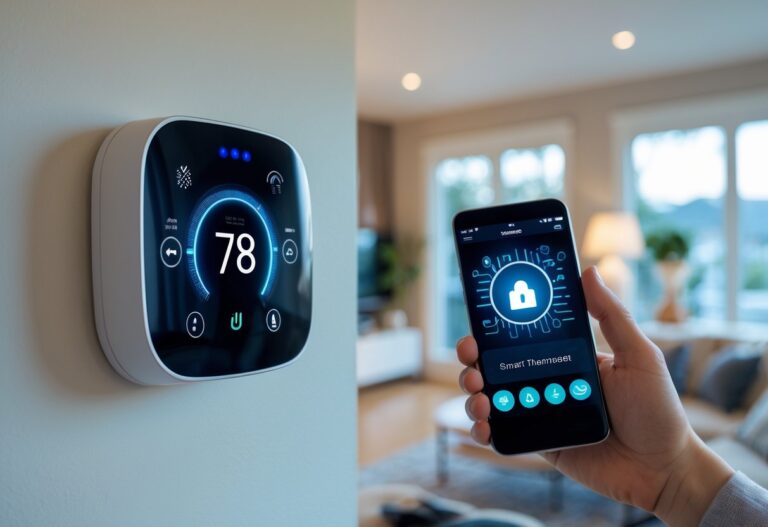Many homes still have simple 2-wire heating systems, which can make upgrading to a smart thermostat feel complicated. You might wonder if you can enjoy remote control, scheduling, and energy savings without running new wires or making expensive changes.
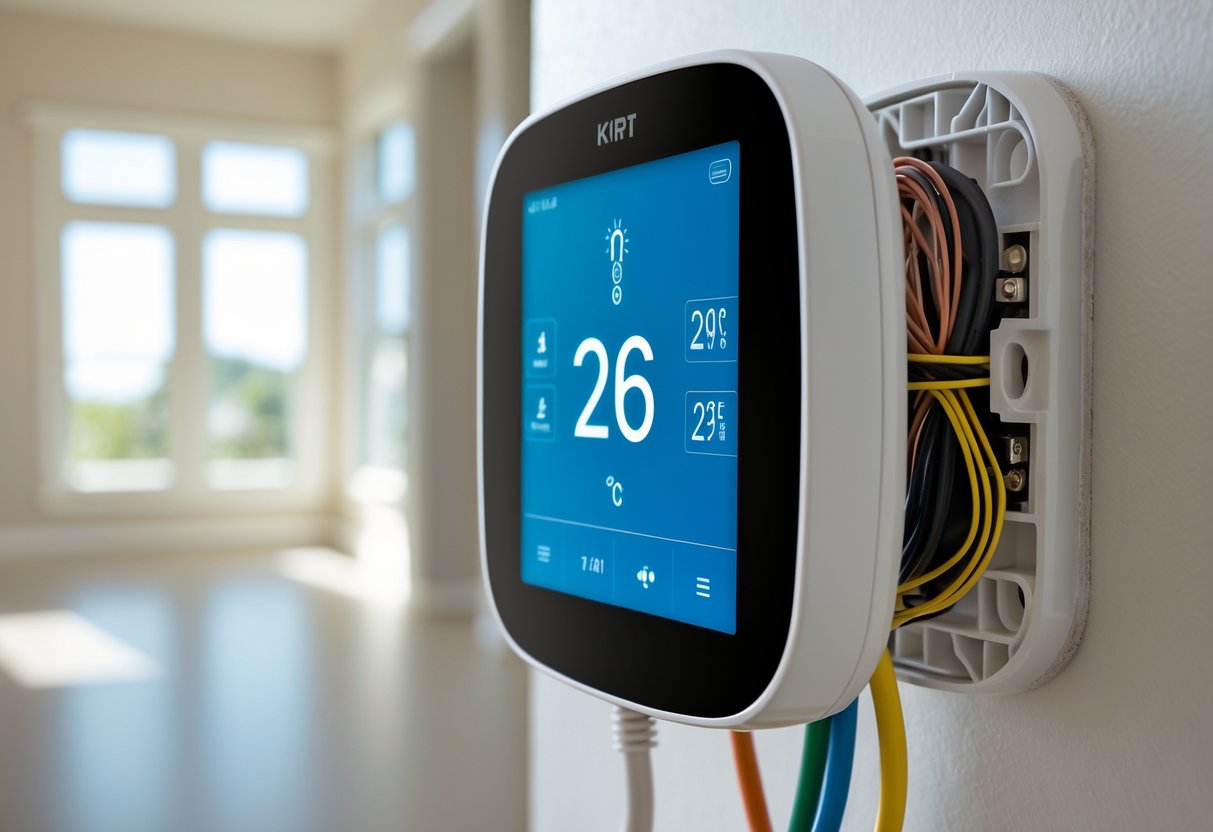
Several smart thermostats are designed specifically to work with 2-wire setups, so you can still upgrade and enjoy modern features. Models like the Nest Learning Thermostat and certain battery-powered smart thermostats offer easy installation and solid performance. Understanding which options fit your system can help you make the best choice for comfort and convenience.
Key Takeaways
- Smart thermostats can work with 2-wire systems if you choose the right model.
- The best models offer smart features such as remote control and scheduling.
- Choosing a compatible thermostat avoids the need for extra wiring or costly modifications.
Understanding 2-Wire Systems and Smart Thermostat Compatibility
2-wire systems are common in older homes and control basic heating or cooling functions. Choosing a smart thermostat for these setups involves understanding how power and compatibility issues affect installation and daily use.
How 2-Wire Thermostat Systems Work
A 2-wire thermostat system is often found in homes with simple HVAC systems, such as heating-only units like boilers or furnaces. These setups use just two wires: one for power and one for control.
Unlike modern systems, a 2-wire system does not power fans or other features. Instead, it only triggers the heating (or sometimes cooling) to turn on or off. This simplicity makes them easy to install but limits advanced options.
Typical Wire Labels:
| Wire Color | Common Label | Function |
|---|---|---|
| Red | R or Rh/Rc | Power (24V) |
| White | W | Heat call signal |
Because 2-wire HVAC systems lack extra wires, they do not support some advanced thermostat features without extra steps.
Compatibility Challenges with Smart Thermostats
When you try to install a smart thermostat on a 2-wire system, compatibility can become an issue. Most smart thermostats need power at all times for Wi-Fi, displays, and scheduling features.
Standard 2-wire systems do not provide continuous power (24V) to the thermostat. This can cause the smart thermostat to malfunction or work unreliably.
Some smart thermostats include built-in batteries or can “power steal” during operation, but this is not always reliable. Brands like Nest and ecobee offer models that sometimes support 2-wire HVAC systems, but features may vary. In other cases, an accessory, such as an Add-A-Wire adapter, is required to supply extra power.
Checking the manufacturer’s compatibility charts before buying is important. This can help you avoid issues during installation.
Role of the C-Wire in Smart Thermostat Installation
The C-wire (common wire) is often missing from older 2-wire installations. The C-wire provides a steady power supply, which is needed by most smart thermostats.
Without a C-wire, some smart thermostats will not work correctly. You might notice the device constantly rebooting, dropping Wi-Fi, or turning off the display. Some models claim to run on two wires, but these often have limited features or reduced reliability.
If you want full smart features, you may need to add a C-wire or use a power extender kit. These kits create a virtual C-wire without major rewiring. Always check your HVAC system’s wiring before installing a new thermostat, and use the manufacturer’s instructions for best results.
Best Smart Thermostats for 2-Wire Systems
When you have a 2-wire heating system, not every smart thermostat will work without extra steps. Some brands offer models and kits that solve this problem, making it possible to get modern features without rewiring your home.
Top 2-Wire Compatible Models
Several 2-wire smart thermostats stand out for their easy installation and reliable performance with older heating or cooling systems. The Google Nest Thermostat E and Nest Learning Thermostat (3rd Gen) both allow use with only two wires, though some systems may still need a C-wire or Add-A-Wire adapter for the best results.
Honeywell Home T9 and T10 Pro Wi-Fi thermostats are also good options. They can work with 2-wire setups by adding a power adapter kit, included in most bundles. Some basic smart thermostats, like the Emerson Sensi Wi-Fi Smart Thermostat, have low power requirements and high compatibility with simple systems.
Always check your system’s compatibility using the manufacturer’s online tool or instructions before ordering.
ecobee3 lite and Power Extender Kits
The ecobee3 lite is a top pick if you have a 2-wire system, especially for heat-only setups. It needs constant power, but ecobee includes a Power Extender Kit (PEK) with the thermostat. This kit lets you connect your ecobee3 lite even if you don’t have a common wire (C-wire).
Installation is straightforward with simple labels and color-coded wiring. The PEK bridges the power gap by creating a simple way to provide the C-wire function. In most cases, you do not need to hire an electrician unless you feel uncomfortable with DIY wiring.
Many users report stable Wi-Fi connection, remote control, and scheduling features. The ecobee3 lite also supports additional room sensors if you want better temperature coverage.
Brands Supporting 2-Wire Smart Thermostat Solutions
A few brands offer models or accessories to help with 2-wire system compatibility. ecobee includes the PEK and supports detailed installation guides. Google Nest recommends either a C-wire or an Add-A-Wire kit in homes with only two wires, and provides compatibility resources.
Honeywell Home and Emerson Sensi design some thermostats for installations with no C-wire, but may offer adapters or suggest an Add-A-Wire product for best operation.
Here’s a quick list:
| Brand | 2-Wire Support | Adapter/Kit Needed |
|---|---|---|
| ecobee | Yes (with PEK) | PEK included |
| Google Nest | Yes (with some models) | C-wire or Add-A-Wire required |
| Honeywell | Yes (with some models) | Adapter Kit or Add-A-Wire |
| Emerson Sensi | Limited (some models) | Adapter or Add-A-Wire |
Confirm with the manufacturer or a professional before purchasing, as wiring needs may vary by system.
Key Smart Features and Energy Benefits
Smart thermostats for 2-wire systems do more than control temperature. They give you better control, energy savings, and access to helpful smart features that fit with most modern homes.
Remote Access and Mobile App Controls
You can manage your home’s temperature from anywhere. Most 2-wire smart thermostats have mobile apps for Android and iOS devices. With these apps, you can turn your system on or off, change the temperature, or set schedules even if you are not at home.
Remote access is helpful if your schedule changes. For example, you can warm the house before you get home on a cold day. Some apps also show usage reports or alert you if the temperature goes out of your set range.
Supported features can include:
- Temperature adjustments
- Scheduling
- Alerts and reminders
- Vacation mode
These controls make heating simple and help you avoid energy waste.
Voice Control and Voice Assistant Integration
Smart thermostats now work with major voice assistants. Many 2-wire models support Amazon Alexa, Google Assistant, and Apple HomeKit. You can change settings using simple voice commands without touching your phone or the thermostat.
For example, you can say, “Alexa, set the living room to 70 degrees.” This is useful if your hands are full or you’re in another part of the house.
The most important voice control features are:
- Adjusting temperature by voice
- Turning heating or cooling on and off
- Adding the thermostat to routines or automation in your smart home
This makes temperature control more accessible and convenient for everyone in your home.
Energy Efficiency and Cost Savings
A key reason to use a smart thermostat is to save energy. Energy-saving features help reduce how much your heating system runs. Many models use learning algorithms to understand your habits and adjust settings for better efficiency.
Smart thermostats often include:
- Auto-scheduling to match your daily routine
- Reports that show your usage and savings
- ECO and Away modes to avoid heating when no one is home
These features help lower energy bills and make your home more efficient. Over time, the savings can add up and benefit both your wallet and the environment.
Wi-Fi Connectivity and Smart Home Integration
Wi-Fi lets your thermostat connect to other smart devices. You can link your thermostat with systems like Amazon Alexa, Google Assistant, and Apple HomeKit.
Smart home integration allows for:
| Feature | Benefit |
|---|---|
| Linking with other devices | Synchronized routines |
| Software updates | Access to new features and security |
| Remote troubleshooting | Easier support if you have a problem |
Wi-Fi connectivity also lets you receive updates and set scenes. For example, your thermostat can adjust when you leave home or when sensors detect movement. This adds more comfort and convenience to your daily life.
Installation, Troubleshooting, and Practical Considerations
Many smart thermostats can be installed using only two wires, but you may need to adjust the setup or choose a model designed for low-power systems. Power options, like batteries or power extenders, and troubleshooting help will depend on your wiring and system type.
Easy Installation and DIY Tips
If you have only two wires coming from your wall, you can still install certain smart thermostats yourself. Start by shutting off power to your HVAC system at the breaker to avoid shock. Remove your old thermostat cover and label each wire, usually marked as R and W.
Before you buy, check that the smart thermostat works with only two wires—brands like Nest or ecobee have compatible models. Mount the new thermostat’s base, connect the wires, and screw it into the wall.
Most smart thermostats will guide you through setup with on-screen instructions. If your heating or cooling doesn’t turn on, double-check wire connections. Even without a common wire (C-wire), many models will function, but you may need to try alternate power solutions.
Power Options: Batteries, Power Stealing, and Extender Kits
Two-wire systems often lack a C-wire to provide continuous power. Some smart thermostats run on battery power, which is simple but requires you to change batteries every year or so.
Others use power stealing, which draws a small amount of power from the existing wires while running your HVAC. This option works with some furnaces but may not be reliable for every system.
A more permanent fix is to use a power extender kit (PEK). Brands like ecobee include a PEK to add a “virtual” C-wire at the furnace. You can also have an electrician run a new wire, but this option costs more. Choose the method that best matches your setup and your DIY comfort level.
Troubleshooting Common Issues
If your smart thermostat isn’t working, check that the wires are connected securely at both the thermostat and at your HVAC control board. Double-check you selected the correct system type during setup.
Common issues include losing Wi-Fi connection, system not turning on, or the thermostat rebooting often. Try restarting your thermostat and your Wi-Fi router if you see connection problems.
If your HVAC won’t start, ensure your thermostat’s batteries are fresh (if used), and check your home’s breaker or fuse box. Some systems require a C-wire adapter or may not be fully compatible with power stealing, so check the manufacturer’s site for guidance. If problems continue, contact technical support or a local HVAC technician for help.
